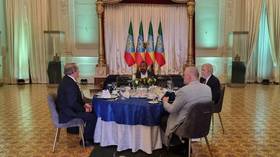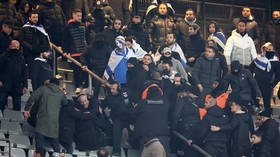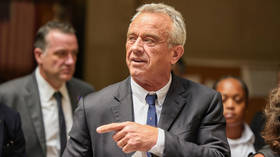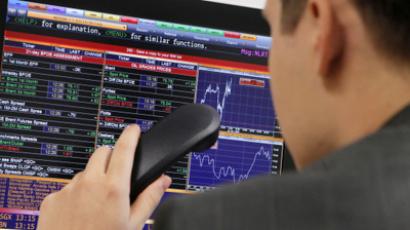Rouble outlook has to balance deteriorating global outlook with crude prices

Despite a rouble slump in late august key policymakers say the Russian currency is not expected to devalue significantly in the coming months despite an estimated $30 billion in corporate debt to be refinanced.
Deputy Economic Development Minister, Andrei Klepach, told journalists this week that the rouble slump seen over August was expected to be a short term phenomena stemming from the exit of speculative capital from Russia as the global risk environment worsened with the Eurozone turmoil and mounting fears of a double dip recession in the US.Klepach said that with crude prices likely to remain at or above $100/bbl, and with a firm current account performance, the outlook for the Russian currency could see strengthening.“In terms of trade balance and balance of payments, we have all the conditions for the rouble to be even stronger than 27-28 roubles per dollar, the current fluctuations have a short-term timing and are associated with response to changes in the rating of Italy, and risks in the euro zone.”Sergei Ignatiev, Chairman of the Russian Central Bank said he was not expecting to see a further broadening of the trading band against the dual currency basket the rouble is managed against, despite last week’s move to increase the trading band, and the intervention of the bank to stabilise rouble movements."I am satisfied with the currency corridor in the current form with 5 roubles width and the upper limit, if not mistaken – 37.5 roubles. I see no need to change the parameters of the corridor. That does not mean that we do not consider any changes in a month or two,”Andrey Dirgin, Head of Research at Forex, said the Russian currency is being hit by the weak global outlook with the Eurozone factors, bad US data, and signs of a slowdown in China adding to the gloom. He says that although the Russian Central Bank may not be expecting to have to act, it needs to be prepared in case the external environment worsens. He says any strengthening of the rouble qill require a resolution to the concerns in Europe and the US.“Despite assurances by the Central Bank that the massive currency interventions will not be undertaken, apparently, the controller will again serve as the "guardian" of the rouble and increase the volume of intervention up to $500 million. While such actions can only keep the Central Bank exchange rate from falling below 32 roubles per dollar. In order for the rouble to appreciate by 30 per dollar, the situation on the global markets should turn positive consequently followed by the rise in oil price which determines the dynamics of the Russian currency”Dirgin adds that the correlation of the rouble and Brent crude oil is 66% – quite high, meaning that the crude price is the key factor. He agrees with the Central Bank that with oil prices reasonably stable the Russian currency is oversold.“When a barrel of Brent crude is down $1, the rouble loses 10 kopecks. But at the present time the rouble is definitely oversold. At current oil prices – $103 for Brent – the fair value of the dollar is 27.3 roubles, weak market conditions on global stock markets and as a result, outflows of investments from risky assets in developing countries lead to a fire-sale of the Russian rouble. Moreover, banks and companies are looking to stock up with cash currency hedging their risk from recession in world economies.”The Central Bank cannot change the long term trend in the market according to InvestCafe analyst Anna Bodrova. She says the rouble will continue to weaken over the longer term, although short term debt refinancing could limit this in the short term. She adds that concern over lobnger term monetary policy reflecting Duma and Presidential elections in the next six months is another long term weight on the Russian currency. “I am still confident that in the long-term the rouble will continue to weaken and after the election of 2012 it will lose about 20%. If large companies start buying the currency in order to ensure their balance sheets to the desired level of liquidity, a substantial correction of the futures on dollar/rouble would not happen, despite the fact that a pair is extremely overbought. The fall of the rouble caused by the fear, misunderstanding of the actions of Russian authorities and the desire to remain aloof from the political games”Nikita Ignatenko, analyst at InvestCafe says the Russian banking sector is eyeing oil prices which serve to add liquidity. “High oil prices provide additional liquidity for the banking sector, which support development of the banking services and their quality. However, during 2011 Russian banking sector has witnessed a controversial situation when excess liquidity on the back of high oil prices lead to capital outflow due to low demand for funds on the local markets. At the end of the year the credit portfolio is expected to grow by 20% given that the excessive liquidity in the banking sector has started to shrink due to growing demand for credit products. The situation with liquidity in banking sector will stabilize gradually” Tony Thompson, Head of Advisory, KPMG in Russia and CIS says the crude export orientated economies are more influenced by the global turmoil with local currencies issues flowing through to broader markets.“The rouble was hit as well as some of the other emerging and developing markets currencies, such as Korean and Brazilian currencies, as a result on money markets movements away from perceived riskier currencies in the event of global recession. In such circumstances commodity prices and global demand may fall, weakening disproportionately the economies of these countries. There is not the level of global underlying support that there is, for example, the dollar.”Thompson adds that for Russia further rouble support measures, including interest rate moves, are likely. He says that rate moves will need to be balanced against inflationary pressures stemming from the rouble slide.“From now on there will probably be a continuing need to support the rouble and this may include an increase in the refinancing rate, notwithstanding the inflationary situation. As regards the Russian economy, the increased prices of imported goods, will impact both inflation and domestic consumption and steps may be necessary to control prices of key foodstuffs.”He say that the rouble devaluation of the last 2 months has encouraged a shift from rouble savings to dollar accounts will put pressure on bank lending“There is already a tightening in the credit markets affecting both the rouble and foreign currency lending, as banks conserve increasingly stretched resources, and the some $30 billion of refinancing requirement in the corporate sector in Russia coming up over the next 4 months will be problematic. The initial tightening affected dollar denominated lending first for technical reason but now is having a wider affect as the banking system in general comes under pressure.”













